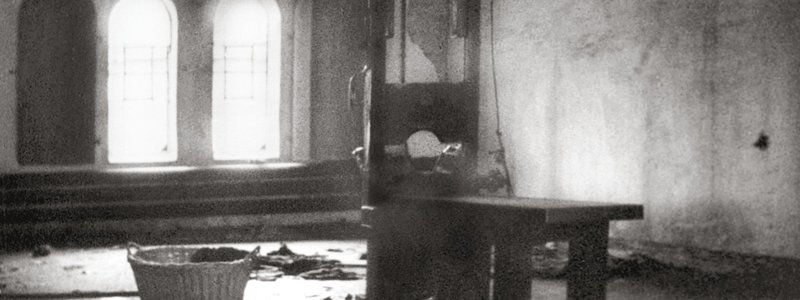Murder by Guillotine and Hanging

Prisoners sentenced to death by the “People’s Court” or another non-military court could petition for clemency. The decision about their fate lay with Hitler, who passed it on to the Reich Justice Minister in September of 1939. If the latter rejected the appeal, the Reich Ministry of Justice ordered the execution. The public prosecution department set the enforcement date, informed the prison and the prisoner’s lawyer, and assigned the executioner. The corpse was delivered to Berlin University’s anatomical institute.
Condemned prisoners were held in the large cell block (House III) adjacent to the execution shed. On the evening before their execution—or in later years, only a few hours beforehand—a public prosecutor informed the execution candidates of their impending death. They spent their last hours shackled in special cells on the ground floor. They could be visited by a clergyman if they wished, but the request was not always granted.
Their last walk took them across a small courtyard to the execution room with the guillotine. The executioner, aided by two or three assistants, carried out the beheading or hanging in a matter of seconds.
Executioners were paid an annual wage of 3,000 reichsmarks, plus 60 (later 65) reichsmarks per execution. The executed prisoners’ relatives had to pay an “invoice for costs incurred.” The public prosecution department demanded 1.50 reichsmarks for every day’s imprisonment in Plötzensee, 300 reichsmarks for the execution, and 12 pfennigs in postage for the receipt of the invoice.
